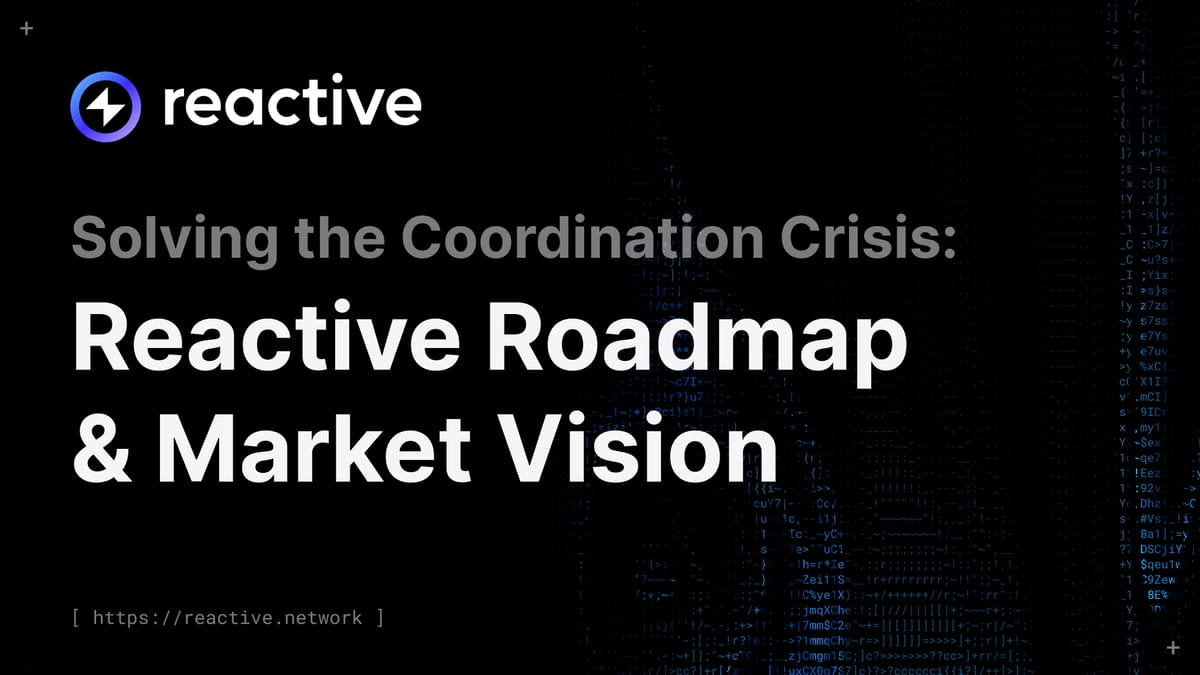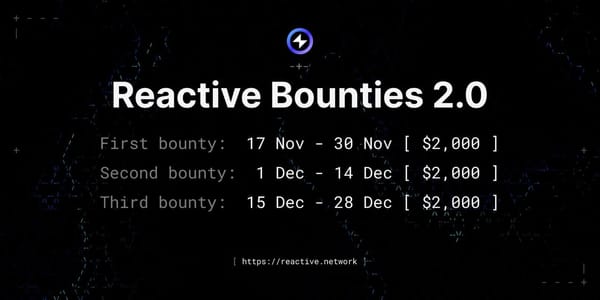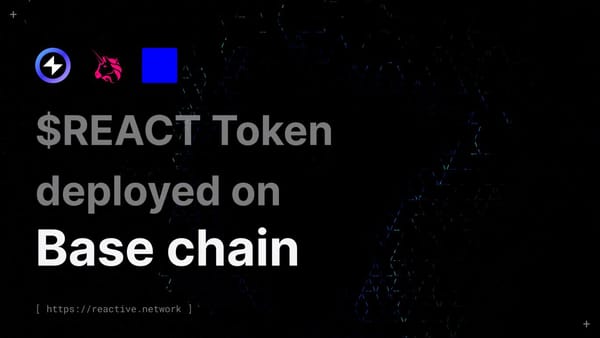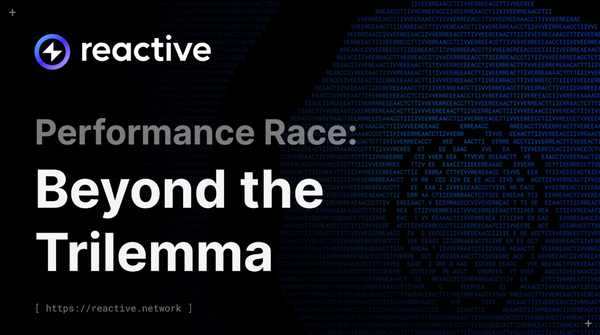Solving the Coordination Crisis: Reactive Roadmap & Market Vision

Blockchain is reaching a tipping point. After years of experimentation, the first signs of institutional-grade infrastructure are beginning to emerge. Two markets stand out as the drivers of this shift: tokenized real-world assets (RWA) and decentralized finance (DeFi).
The challenge, however, is no longer raw throughput. The bottleneck is coordination.
Coordination Crisis
The current ecosystem is deeply fragmented. More than 200 chains exist, each acting as a silo with its own liquidity and state. Smart contracts, while powerful, remain static and can’t autonomously respond to off-chain or cross-chain events.
The deeper the fragmentation the more significant and systemic the risks. Multi-step cross-chain processes lack atomic guarantees, so transactions can fail mid-way with no universal rollback. For institutions, this translates into integration headaches, compliance complications, and operational inefficiency.
History shows that proliferation is always followed by consolidation when coordination benefits outweigh specialization. Examples include the standardization of rail gauges, the adoption of TCP/IP for the internet, and the role of SWIFT in global finance.
The same logic applies here. Coordination layers bring network effects that are far more impressive than execution-layer scaling. Execution gains are linear, but coordination gains compound exponentially as more participants interconnect. For blockchain, the absence of a coordination standard is becoming unsustainable.
Reactive Approach
This is the gap Reactive Network is built to fill, letting smart contracts operate across chains with real-time awareness. They can monitor activity and trigger actions directly, without relying on centralized bridges or middleware. Execution remains fully decentralized.
Reactive will provide coordination through two architectural layers: the network itself (RNK) and user-specific ReactVMs. Each user will have their own ReactVM, which holds their contracts, subscriptions, and execution flows. This design enables parallelized, high-throughput execution across the system. The architecture is VM-agnostic, supporting EVM, SVM, MoveVM, and others, and introduces unified state settlement to guarantee atomic cross-chain updates. New chains can be integrated in hours rather than months.
General Message Passing (GMP) protocols deliver messages across chains, but they stop short of ensuring coordinated outcomes. Reactive goes further.
In short, GMP enables the transfer of data whereas Reactive allows detection, transfer, computation and execution across multiple chains and contracts.
Reactive Roadmap
The path toward becoming blockchain’s coordination standard unfolds in three phases:
Phase 1: Foundation & Feedback (2023–2025)
The first phase focused on proving feasibility. Reactive contracts and ReactVM were launched, initial EVM integrations were completed, and early developer feedback was gathered. This consultation loop validated the architecture and demonstrated that coordination triggered by events works as intended.
Phase 2: Technical Implementation (2025–2027)
In the second phase, Reactive expands beyond EVM chains to Rust-based environments such as Solana and Move-based environments such as Sui, adding broader multi-chain integration. System throughput is expected to scale from around 20,000 TPS to over 100,000 TPS across multiple chains. An elastic gas model is introduced to ensure predictable and affordable automation across the network.
Phase 3: Global Coordination Standard (2027 and beyond)
In the third phase, hundreds of chains connect natively, while validators specialize in subsets of events and operate autonomously, achieving a combined throughput equal to that of all supported chains. A global event mesh provides publish/subscribe functionality across the ecosystem, and self-service onboarding lets chains and projects integrate automatically. Institutional use cases such as AI-based finance, real-world asset settlement, and multi-chain structured products become possible.
At this point, Reactive becomes the coordination standard for blockchain, comparable to TCP/IP for the internet — critical infrastructure that unifies the ecosystem to function as one.
Impact and Advantages
This shift unlocks applications that are currently impossible in a fragmented environment, including:
Every new chain integrated into Reactive increases the value of the entire system. Developers benefit from a “build once, deploy everywhere” model. Chains integrate without competition. Users experience multi-chain interaction without needing to think about what chain they are on.
Reactive positions itself as neutral infrastructure, not a competitor to any chain. Coordination standards, once established, tend to be sticky and resistant to replacement. And the timing is right — fragmentation has peaked, and the industry is ready to consolidate.
Recap
Blockchain is entering its consolidation era. Fragmented chains and static contracts have carried the ecosystem as far as they can; the next leap requires coordination as the missing layer.
Reactive provides that layer. By enabling atomic cross-chain execution, event-triggered transactions, and real-time awareness across ecosystems, it turns isolated networks into a single coordinated system. Liquidity, logic, and risk can now be managed globally rather than piecemeal.
The outcome is profound: new economic primitives — from global settlement networks to AI-based finance — become not only possible but practical. Just as TCP/IP unified the internet, Reactive has the potential to unify blockchain. The coordination shift is no longer a vision, it is our roadmap.
About Reactive Network
The Reactive Network, pioneered by PARSIQ, ushers in a new wave of blockchain innovation through its Reactive Smart Contracts (RSCs). These advanced contracts can autonomously execute based on specific on-chain events, eliminating the need for off-chain computation and heralding a seamless cross-chain ecosystem vital for Web3’s growth.
Central to this breakthrough is the Inversion of Control (IoC) framework, which redefines smart contracts and decentralized applications (DApps) by imbuing them with unparalleled autonomy, efficiency, and interactivity. By marrying RSCs with IoC, Reactive Network is setting the stage for a transformative blockchain era, characterized by enhanced interoperability and the robust, user-friendly foundation Web3 demands.
Website | Blog | Twitter | Telegram | Discord | Docs





